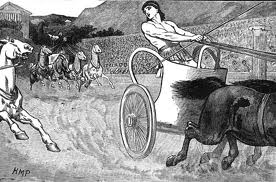History 
In the 5th century BC, the people in china then played a game called ti jian zi. A direct translation from this word ‘ti jian zi’ is kicking the shuttle. As the name suggest, the objective of the game is to keep the shuttle from hitting the ground without using hand. Whether this sport has anything to do with the History of Badminton is up for debate. It was however the first game that uses a Shuttle.
About five centuries later, a game named Battledore and Shuttlecock was played in china, Japan, India and Greece. This is a game where you use the Battledore (a paddle) to hit the Shuttlecock back and forth. By the 16th century, it has become a popular game among children in England. In Europe this game was known as jeu de volant to them. In the 1860s, a game named Poona was played in India as it was particularly popular in the British garrison town Poona (now Pune). This game is much like the Battledore and Shuttlecock but with an added net. The British army learned this game in India and took the equipments back to England during the 1870s. The sport is related to ball badminton, which originated in Tamil Nadu, and is similar to Hanetsuki which originated in Japan. Ball badminton was played mainly by upper classes in windy or wet  conditions using a ball of wool. Hanetsuki used to be played specially by girls with a rectangular wooden paddle called hagoita and a brightly colored shuttlecock.
conditions using a ball of wool. Hanetsuki used to be played specially by girls with a rectangular wooden paddle called hagoita and a brightly colored shuttlecock.
In 1873, the Duke of Beaufort held a lawn party in his country place, Badminton. A game of Poona was played on that day and became popular among the British society’s elite. The new party sport became known as “the Badminton game”.
International Associations
In 1877, the Bath Badminton Club was formed and developed the first official set of rules.
Then in 1893, a new group, the Badminton Association of England took over and revised the rules even more, bringing them to what is still in place today.
The International Badminton Federation (IBF) was formed in 1934 with 9 founding members, namely England, Ireland, Scotland, Wales, Denmark, Holland, Canada, New Zealand and France.
The Badminton World Federation (BWF) is recognized by the International Olympic Committee (IOC) as the world governing body for the sport of badminton. The BWF is empowered by the IOC and the BWF’s 177 Members to govern the sport of badminton worldwide.
International Tournaments
All England Open Badminton Championships, the first badminton competition in the world, in 1899.
As for formal competitions, the 1948-1949 season was the first for male players. The award for this tournament is the Thomas cup, named for IBF president Sir George A. Thomas.
1956-1957 marked the first official season for female players. Their award is known as the Uber Cup, named after Mrs. H.S. Uber of England, who made the donation for the trophy. Both tournaments are still played every two years.
The primary world tournament for badminton is the BWF World Championships, run by the Badminton World Federation. Originally held every three years starting in 1977, it is now held annually, except in Olympic years. The BWF World Championships are contested in five fields: Men’s Singles and Doubles, Women’s Singles and Doubles, and Mixed Doubles.
Sudirman Cup was introduced in 1989, contested every two years.
Badminton was introduced as a Commonwealth Games program sport in Kingston Jamaica in 1966 and has been part of every Commonwealth Games program since then.
Olympic History
After being a demonstration sport in Munich in 1972, Badminton was officially granted Olympic status in the 1992 Barcelona Games.






